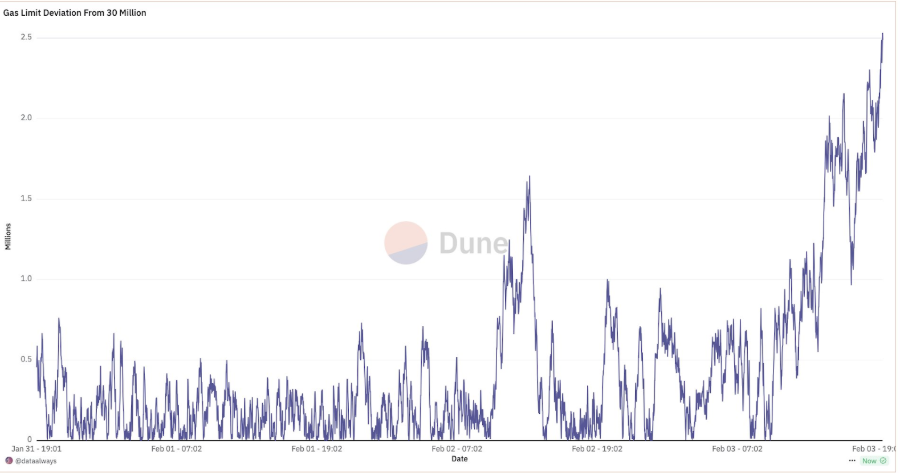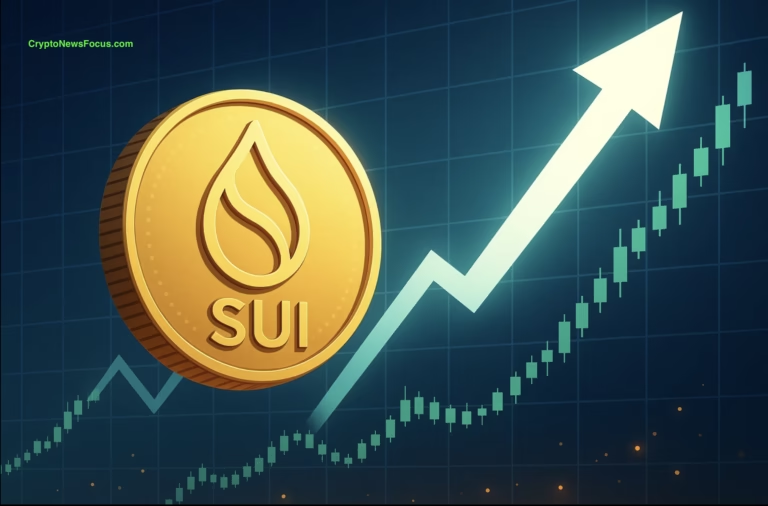
- Ethereum has increased its gas limit to 31 million units, enhancing transaction capacity and scalability without requiring a hard fork, thanks to validator consensus.
- With upcoming upgrades like Pectra, Dencun, and proto-dank sharding, Ethereum continues to improve efficiency, positioning itself as a leading blockchain for decentralized applications.
Ethereum, the world’s leading blockchain network, has once again taken a step forward in scalability and transaction efficiency. For the first time since its transition to a Proof-of-Stake (PoS) consensus mechanism, Ethereum has increased its gas limit to 31 million units. This move, implemented on February 3, 2025, marks a significant milestone in Ethereum’s development and promises improved transaction capacity.
What Does Increasing the Gas Limit Mean?
Gas is an essential element in the Ethereum ecosystem, acting as the unit of measurement for computational effort required to execute transactions or smart contracts. The gas limit, on the other hand, determines the maximum amount of gas all transactions in a single block can consume.

By increasing the limit to 31 million units, Ethereum has effectively expanded its transaction processing capability. This enhancement was achieved through validator consensus, with over 50% support, eliminating the need for a hard fork.
Vitalik Buterin’s Take on the Upgrade
Ethereum’s co-founder, Vitalik Buterin, has acknowledged this development as a crucial step toward scaling Layer 1 (L1). He praised the developers working on key Ethereum Improvement Proposals (EIPs) such as EIP-4444 (history expiry), statelessness, and client efficiency upgrades, all of which aim to make higher L1 gas limits more decentralization-friendly.
Additionally, Buterin highlighted the upcoming Pectra Upgrade, expected in March 2025, which will double the capacity of Layer 2 (L2) solutions by increasing the blob target from 3 to 6. He also suggested that gas limit adjustments should be staker-voted, allowing them to increase dynamically based on technological advancements rather than waiting for hard forks.
What’s Next for Ethereum?
Ethereum’s gas limit increase is just one of many advancements aimed at improving scalability and transaction efficiency. Alongside this, the Dencun Upgrade and proto-dank sharding are also in progress, working toward optimizing Ethereum’s overall performance.
These continuous improvements position Ethereum as a more efficient and scalable blockchain, capable of handling increasing user demand while maintaining decentralization and security. With these advancements, Ethereum remains at the forefront of blockchain technology, paving the way for a faster, cheaper, and more accessible decentralized ecosystem.
Final Thoughts
Ethereum’s decision to increase the gas limit marks an important moment in the network’s evolution. By scaling transaction capacity and improving efficiency, Ethereum is reinforcing its position as a leading blockchain in the decentralized finance (DeFi) and smart contract space. With more upgrades on the horizon, Ethereum’s future looks brighter than ever.




